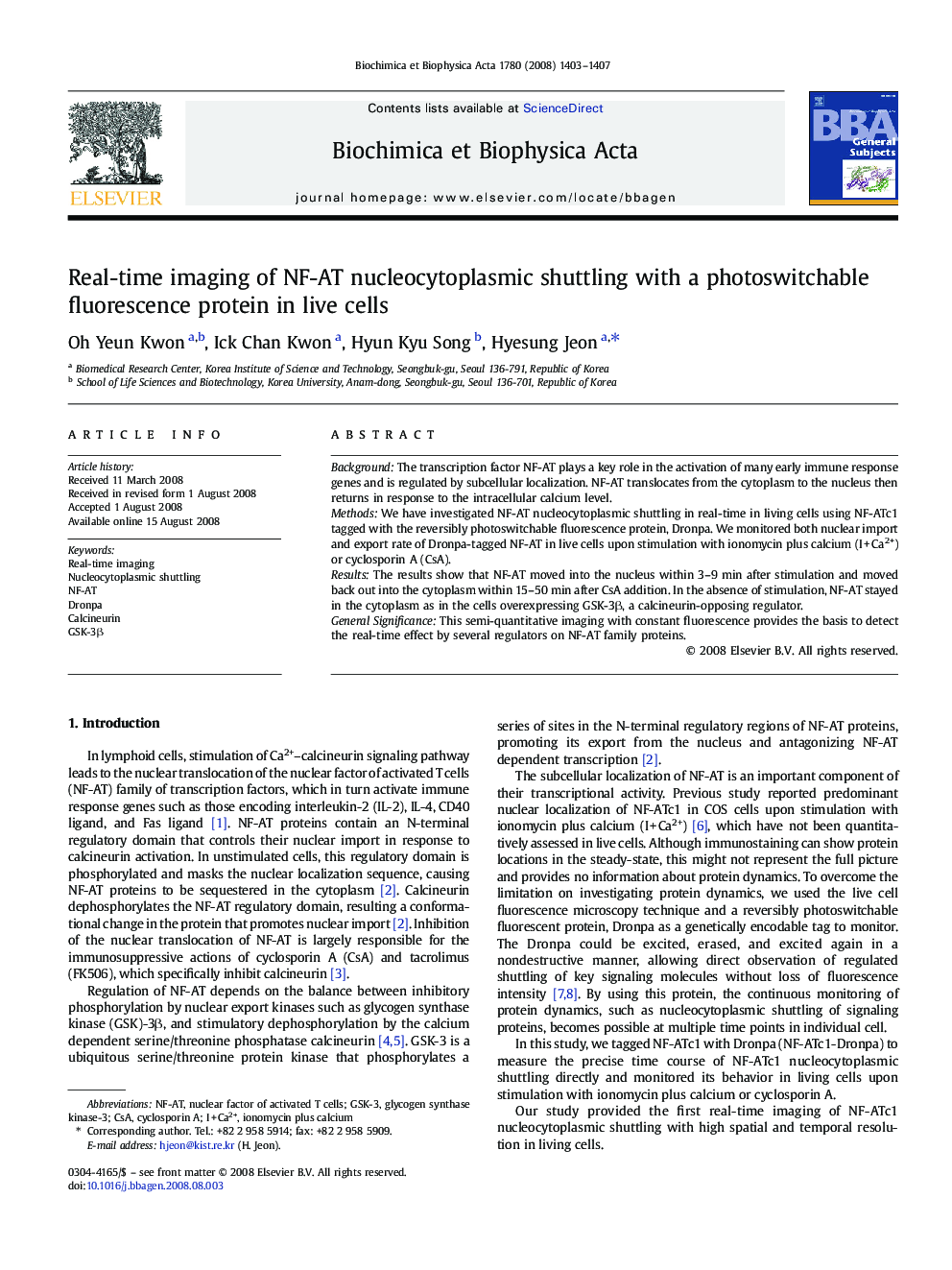| Article ID | Journal | Published Year | Pages | File Type |
|---|---|---|---|---|
| 1948152 | Biochimica et Biophysica Acta (BBA) - General Subjects | 2008 | 5 Pages |
BackgroundThe transcription factor NF-AT plays a key role in the activation of many early immune response genes and is regulated by subcellular localization. NF-AT translocates from the cytoplasm to the nucleus then returns in response to the intracellular calcium level.MethodsWe have investigated NF-AT nucleocytoplasmic shuttling in real-time in living cells using NF-ATc1 tagged with the reversibly photoswitchable fluorescence protein, Dronpa. We monitored both nuclear import and export rate of Dronpa-tagged NF-AT in live cells upon stimulation with ionomycin plus calcium (I + Ca2+) or cyclosporin A (CsA).ResultsThe results show that NF-AT moved into the nucleus within 3–9 min after stimulation and moved back out into the cytoplasm within 15–50 min after CsA addition. In the absence of stimulation, NF-AT stayed in the cytoplasm as in the cells overexpressing GSK-3β, a calcineurin-opposing regulator.General SignificanceThis semi-quantitative imaging with constant fluorescence provides the basis to detect the real-time effect by several regulators on NF-AT family proteins.
